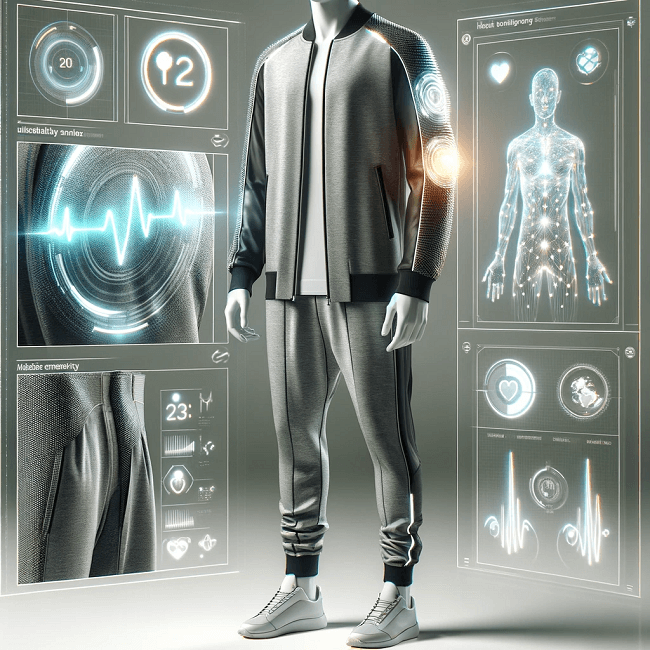In the ever-evolving landscape of wearable technology, a new frontier is emerging with the integration of smart apparel. Beyond the familiar wrist-based trackers and smartwatches, smart apparel is revolutionizing how we think about wearable wellness. Equipped with embedded sensors and cutting-edge technology, this category of wearables seamlessly blends fashion and function to provide users with continuous health insights. In this article, we explore the burgeoning world of smart apparel, its applications in various sectors, and the potential it holds for shaping the future of wearable wellness.
The Rise of Smart Apparel: Beyond Traditional Wearables
While smartwatches and fitness trackers have become commonplace, smart apparel represents a shift towards more integrated and inconspicuous health monitoring. This category includes garments embedded with sensors capable of monitoring a range of health metrics, from basic biometrics like heart rate and temperature to more advanced measurements such as posture and even hydration levels.
Smart apparel is designed to seamlessly integrate into our daily lives, eliminating the need for additional devices. From smart sports bras that monitor heart rate during workouts to smart socks that analyze running gait, these garments are redefining the wearable experience. The future of wearable wellness is one where technology is woven into the fabric of our clothing, providing continuous health insights without disrupting our routines.
Monitoring Vital Signs: A 24/7 Health Snapshot
One of the primary advantages of smart apparel is its ability to offer a comprehensive 24/7 health snapshot. Traditional wearables are limited by the amount of time users choose to wear them, but smart apparel, worn as part of daily attire, provides continuous monitoring. This continuous data collection enables a more accurate and holistic understanding of an individual’s health and well-being.
For instance, a smart shirt with embedded sensors can monitor heart rate, respiratory rate, and body temperature throughout the day. This constant stream of data allows users and healthcare professionals to identify patterns, trends, and anomalies, fostering a proactive approach to health management. The result is a more nuanced understanding of how lifestyle factors impact health on a minute-by-minute basis.
Advanced Biometrics and Performance Optimization
Smart apparel goes beyond basic health monitoring, venturing into the realm of advanced biometrics and performance optimization. Athletes and fitness enthusiasts can benefit from garments that analyze muscle activity, detect fatigue, and assess hydration status. This data can be invaluable for optimizing training regimens, preventing injuries, and maximizing performance.
Imagine a pair of smart leggings that track your running pace and distance and provide real-time feedback on your running form. By analyzing biomechanical data, smart apparel can offer personalized insights to enhance athletic performance and reduce the risk of injuries. This intersection of technology and sportswear is ushering in a new era of precision in fitness training.
Healthcare Applications: Remote Monitoring and Beyond
The applications of smart apparel extend beyond fitness and into the realm of healthcare. Remote patient monitoring, a critical aspect of modern healthcare, can be significantly enhanced by smart garments’ continuous data collection capabilities. Patients with chronic conditions can benefit from wearable shirts or patches that monitor vital signs and send real-time data to healthcare providers.
Additionally, smart apparel can play a crucial role in preventive healthcare. Garments equipped with sensors that detect early signs of potential health issues, such as irregular heart rhythms or changes in sleep patterns, can prompt users to seek medical attention before symptoms escalate. This proactive approach has the potential to revolutionize healthcare by shifting the focus from reactive treatment to preventive measures.
Challenges and Considerations: Privacy and User Adoption
While the potential of smart apparel in wearable wellness is vast, it comes with its set of challenges. Privacy concerns related to continuous health monitoring are at the forefront of these challenges. Users may be wary of the implications of sharing intimate health data, raising important questions about data security, consent, and ownership.
Moreover, user adoption is a crucial factor in the success of smart apparel. Convincing individuals to integrate technology into their clothing requires a balance between functionality, comfort, and aesthetics. Wearables need to seamlessly blend into existing fashion norms while providing tangible and meaningful benefits to users. Striking this balance will be instrumental in overcoming resistance to adopting smart apparel on a large scale.
The Future of Wearable Wellness
As technology continues to advance, the future of wearable wellness will likely be shaped by integrating technology into everyday life. Smart apparel represents a paradigm shift from standalone devices to a more integrated and unobtrusive approach to health monitoring. The potential applications in fitness, healthcare, and beyond underscore the transformative impact smart apparel can have on our well-being.
We can anticipate even more sophisticated sensors, improved materials, and enhanced connectivity in smart apparel. The marriage of fashion and technology will result in garments that look good and actively contribute to our health and wellness. As these innovations unfold, smart apparel is poised to redefine the wearable wellness landscape, offering a future where our clothing becomes an integral part of our journey towards healthier and more connected lives.




